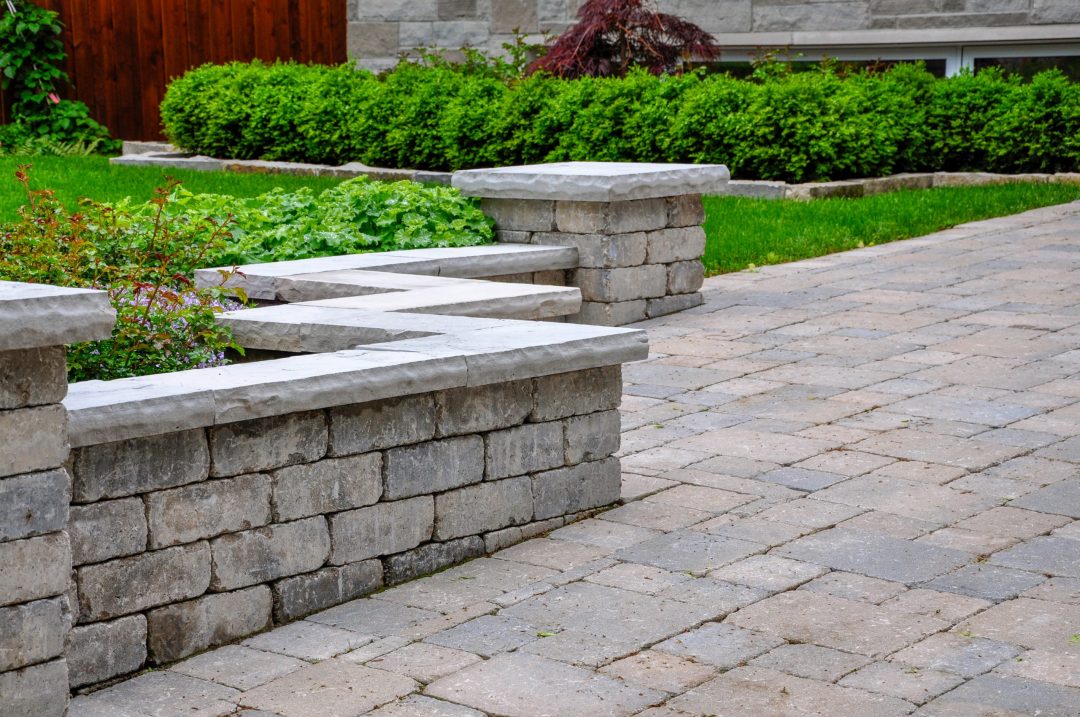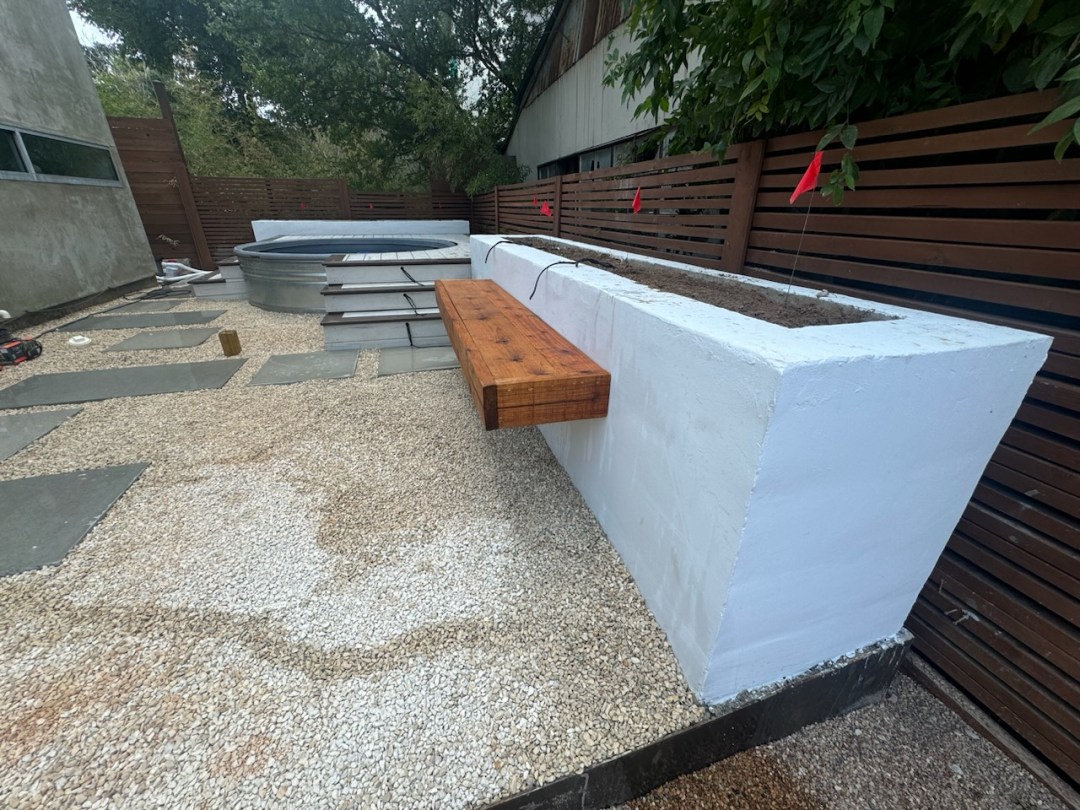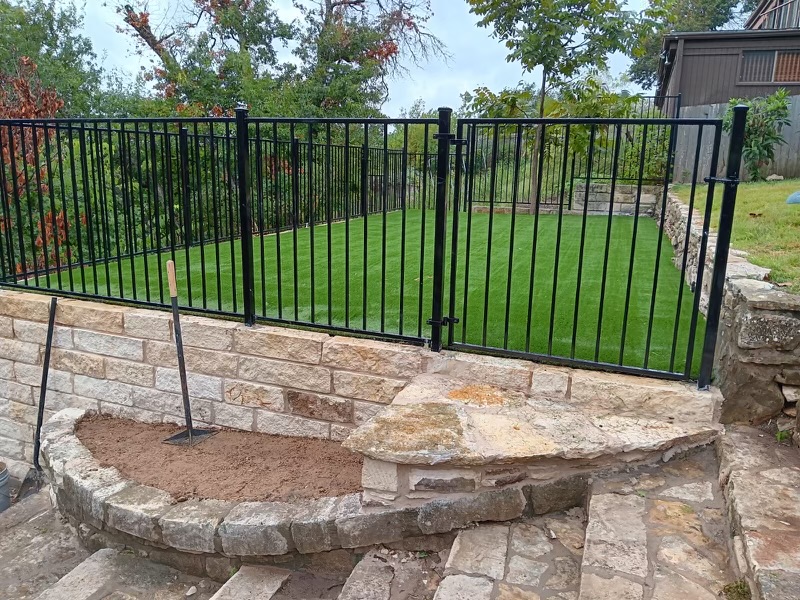Have you ever struggled with a sloped yard that’s hard to use or noticed soil washing away after a heavy rain? These common landscaping challenges often point to one powerful solution: a retaining wall.
A retaining wall is a structure designed to hold back soil and prevent erosion, typically used to manage changes in ground elevation and create more functional outdoor spaces.
These walls serve multiple purposes—they add stability to uneven terrain, enhance the visual appeal of your landscape, and maximize usable space in your yard.
On this page, we’ll explore what retaining walls are, the different types available, their key benefits, popular materials used, design considerations, and common questions homeowners have.
Table of Contents
At its core, a retaining wall is a specially engineered structure built to hold back soil and resist the lateral pressure that comes from earth movement. These walls are essential in landscapes where elevation changes need to be managed safely and effectively.
A well-built retaining wall consists of several key components. The foundation supports the entire wall and ensures long-term stability. The wall face is the visible portion that provides strength and structure, often made from materials like stone, concrete, or wood. Behind the scenes, proper drainage is critical—drain pipes and gravel backfill help relieve water pressure and prevent failure over time.
It’s essential to note that retaining walls differ from decorative garden walls and property line fences. While those may add aesthetic value or mark boundaries, they aren’t designed to withstand the same forces. Retaining walls are functional structures that play a vital role in landscape integrity, especially in sloped or erosion-prone areas.
There are several types of retaining walls, each with its own set of advantages and ideal applications. Here’s a quick breakdown of the most common options:

Constructed using modular pavers or blocks, these walls are often used in DIY-friendly or smaller-scale projects.
Pros: Affordable, customizable, easy to replace individual pieces, wide range of styles.
Cons: Less structural integrity for tall or load-bearing applications, may require more frequent maintenance.

Built using precast interlocking concrete blocks, these walls are a popular choice for both residential and commercial properties.
Pros: Strong, uniform appearance, faster to install, good for curves and custom shapes.
Cons: Less natural look, can be expensive depending on style and finish.

Made from natural stone, these walls offer a timeless, rustic look that blends beautifully with outdoor landscapes.
Pros: Highly durable, visually appealing, blends well with natural surroundings.
Cons: Higher cost, labor-intensive to install, can be irregular in shape.

Typically made from corten or galvanized steel panels, these walls offer a sleek, modern look and are often used in minimalist or industrial-style landscapes.
Pros: Very strong, slim profile, low maintenance, unique design aesthetic.
Cons: Can rust over time if not treated, more expensive than other options, not as common in residential settings.
Installing a retaining wall isn’t just about stacking blocks—it requires careful planning and attention to several important factors. Here are the key elements to consider before starting your project:
F. Professional vs. DIY
While smaller retaining walls may be DIY-friendly, larger or load-bearing walls should be handled by experienced professionals. Hiring an expert ensures proper design, installation, drainage, and code compliance—saving time and preventing costly mistakes down the line.
Retaining walls are built to last, but like any outdoor structure, they benefit from routine maintenance to ensure safety and extend their lifespan. Here are a few key practices to keep your wall in top condition:
C. Addressing Vegetation Growth
While some landscaping around a retaining wall can enhance its look, uncontrolled vegetation—especially tree roots—can exert pressure or disrupt the structure. Keep plant growth in check and avoid planting large-rooted trees or shrubs too close to the wall.
Retaining walls are more than just functional structures—they provide stability to your landscape, help manage drainage and erosion, and can significantly enhance the beauty and usability of your outdoor space. Whether you’re dealing with a sloped yard, looking to add dimension to your garden, or simply want to make your property more usable and visually appealing, a retaining wall can be a smart investment.
Ready to take the next step? Consult a professional to ensure your retaining wall is built safely and to last. Want to learn more? Explore our other landscaping guides for tips, inspiration, and expert advice. Or, if you’re ready to get started, contact us today for a free quote and turn your vision into reality.